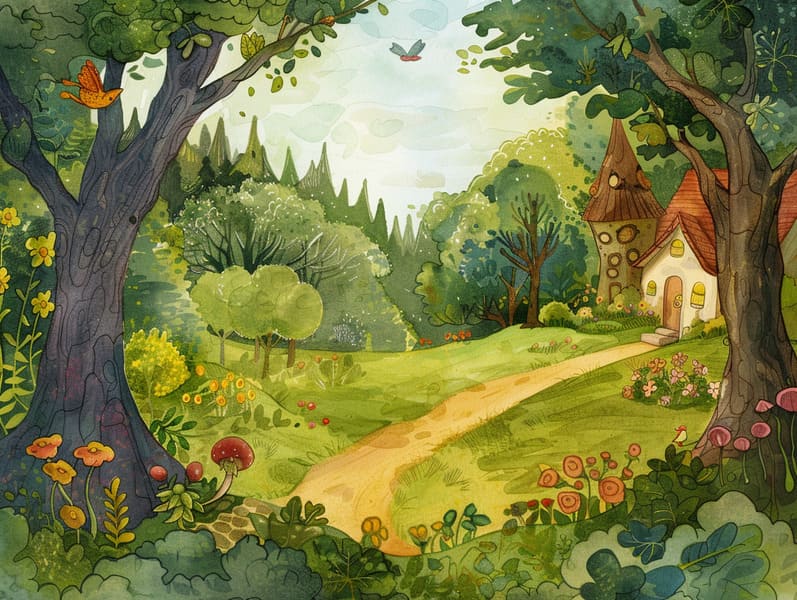Uncovering the Past of Famous Fairy Tales and Their Unwavering Loveliness.
Uncovering the Past of Famous Fairy Tales and Their Unwavering Loveliness.
Blog Article

Grimm's fairy tales have old origins. These narratives have been recounted from one generation to the next ages before they were ever written down. They were born from a variety of traditions, including Indigenous traditions. They were initially shared among adults, often carrying themes and messages mirroring the societal norms and beliefs of the time.
The Brothers Grimm, Jacob and Wilhelm, were among the first to assemble many of these beloved stories. Their published works, "Grimm's Story Collection," included narratives like "Cinderella," "Little Brother and Little Sister," and "Little Snow White," which have since become pillars in the world of famous fairy tales. Similarly, Hans Christian Andersen's imaginative narratives, such as "The Mermaid," and "The Ugly Duckling," have floated into hearts worldwide, solidifying their place in the pantheon of iconic fairy tales.
Though they are centuries old, these tales remain as applicable as ever, especially as children's bedtime stories. These magical stories are now available in multiple formats, including vibrantly illustrated books, whimsical animations, and online storybooks.
Their enduring popularity can be connected to several magical reasons:
Valuable Lessons: Ancient fairy tales often whisper important moral lessons. Fairy tales like "The Wolf and the Liar" teach the significance of integrity, while "The Race of the Tortoise and the Hare" stress the benefits of perseverance and humility. These stories offer little ones clear distinctions between ethical and unethical, helping to shape their moral compass in a soft yet deep way.
Compassion and Insight: Fairy tales frequently feature characters facing difficulties and adversities, urging young readers to empathize with their struggles and back their triumphs. For instance, "Beauty and the Beast" shows us the significance of looking past the exterior to recognize the real person of a person, fostering compassion and appreciation.
Cultural Insights: Many old fairy tales are steeped in the cultural contexts from which they sprang. Exploring these tales can provide captivating looks into different traditions, cultivating a sense of cultural awareness and acknowledgment.
Fantasy and Imagination: The extraordinary elements in classic fairy tales—talking beasts—fire up children’s creative minds. These fairy tales lead readers to fantasy realms, stimulating innovative ideas and a sense of amazement that remains a lifetime.
Traditional fairy tales are not only enchanting but also teaching. They serve as delightful tools in building various cognitive and emotional skills in the young. When fairy tales are recited, they advance language development by teaching new language items and complex sentence structures. This practice also improves hearing perception and attention, as young readers hang on every word, eager to see what happens next.
Furthermore, examining the themes and characters of classic fairy tales can foster cognitive skills and intellectual skills. Kids are led to pinpoint patterns, predict happenings, and figure out cause and effect. These analyses also help kids convey their thoughts and feelings, nurturing their emotional intelligence.
In today’s online age, the prevalence of internet fairy tales has made these stories more within reach than ever. website Internet sites and digital apps present extensive collections of timeless fairy tales that can be browsed or listened through anytime, anywhere. Fairy tales recited are particularly sought after, presenting an interactive method for the young to delight in these charming tales. Voice books and read-to-me videos take characters and settings to life, often augmented by fantastical music and musical scores that augment the tale-telling adventure.
The persistent attraction of old fairy tales lies in their ability to alter to modern society while keeping hold of their key morals. Contemporary versions of these narratives often showcase more varied characters and modern settings, making them meaningful to today’s audience. However, the underlying themes of heroism, goodness, and impartiality remain unchanged, continuing to appeal to kids of all ages.
Fairy tales also offer a sense of protection and predictability. They bring a well-arranged narrative with a apparent beginning, middle, and end, often closing with the resolution of conflicts and the triumph of virtue over corruption. This steadiness can be reassuring for children, showcasing a sense of unchangeability in an variable world.
Old fairy tales continue to charm and enlighten new generations, maintaining their charm and relevance in modern society. As nighttime stories for kids, they highlight a perfect blend of magic and knowledge, boosting moral values, empathy, and creativity. The prevalence of free fairy tales online and the commonness of fairy tales read out loud affirm that these ancient stories remain accessible to new generations.
By conserving and communicating these fairy tales, we continue to exalt the rich tapestry of fables and cultural heritage. Whether you are exploring a vibrantly illustrated book, perusing a electronic library, or playing an narrated book, the grandeur of timeless fairy tales is always within reach. These fairy tales show us of the ageless effect of tales and its ability to link us across epochs and places.
If you are browsing a beautifully illustrated book, accessing a virtual collection, or listening on an read-aloud book, the beauty of ancient fairy tales is always within reach.
These narratives demonstrate of the eternal strength of storytelling and its ability to unite us across eras and regions, establishing a link that enchants and educates alike.